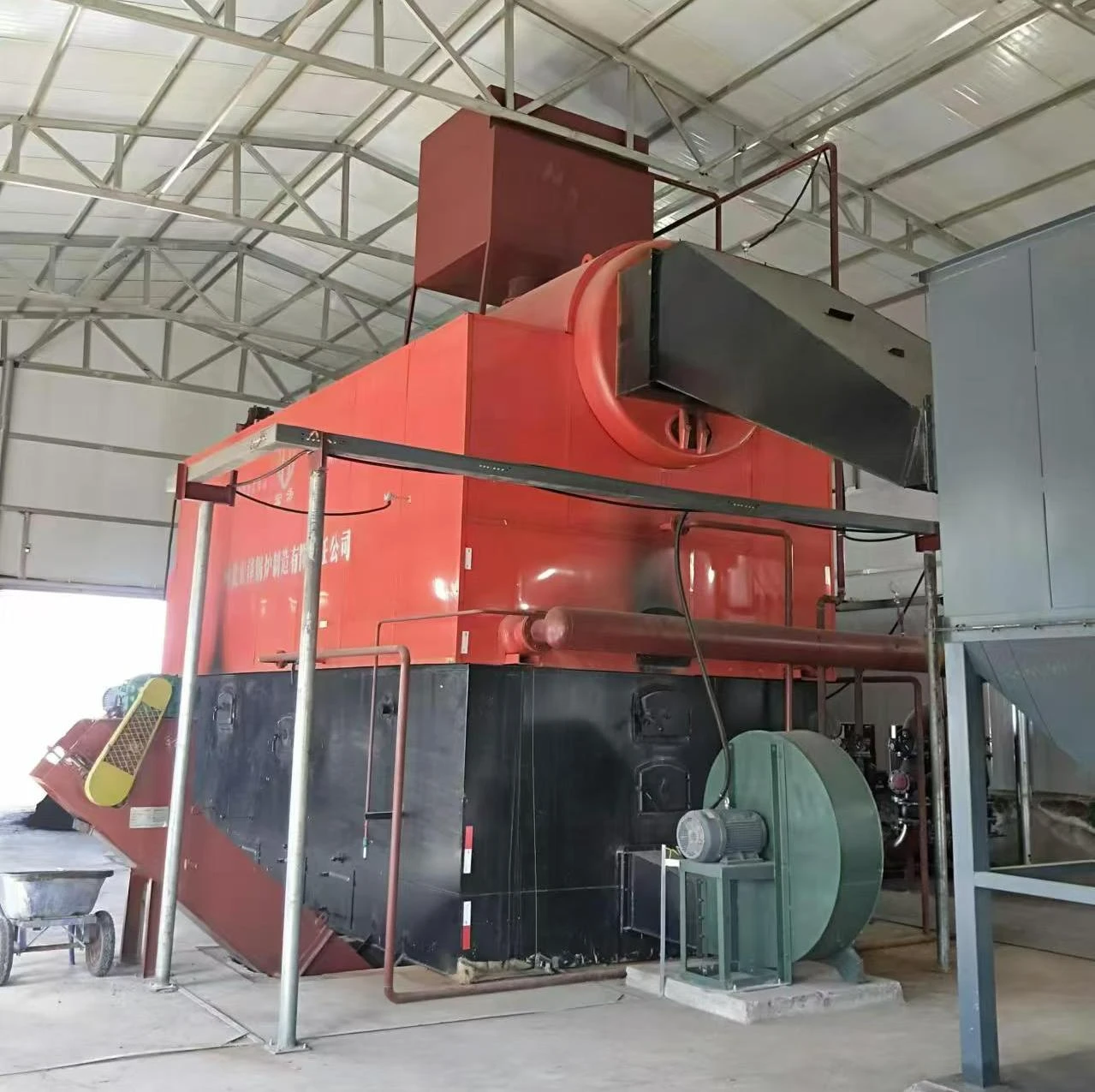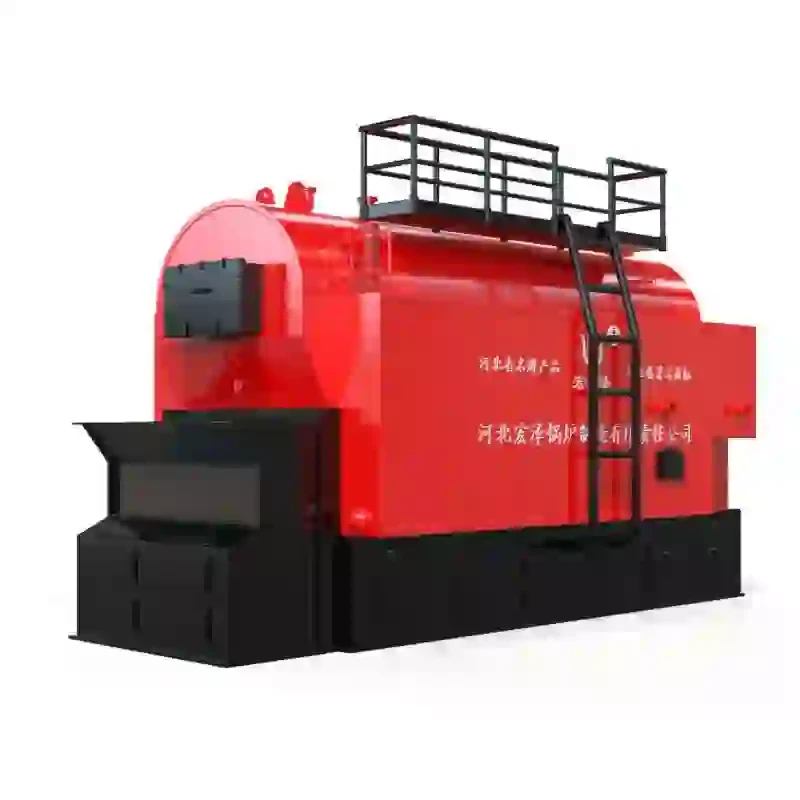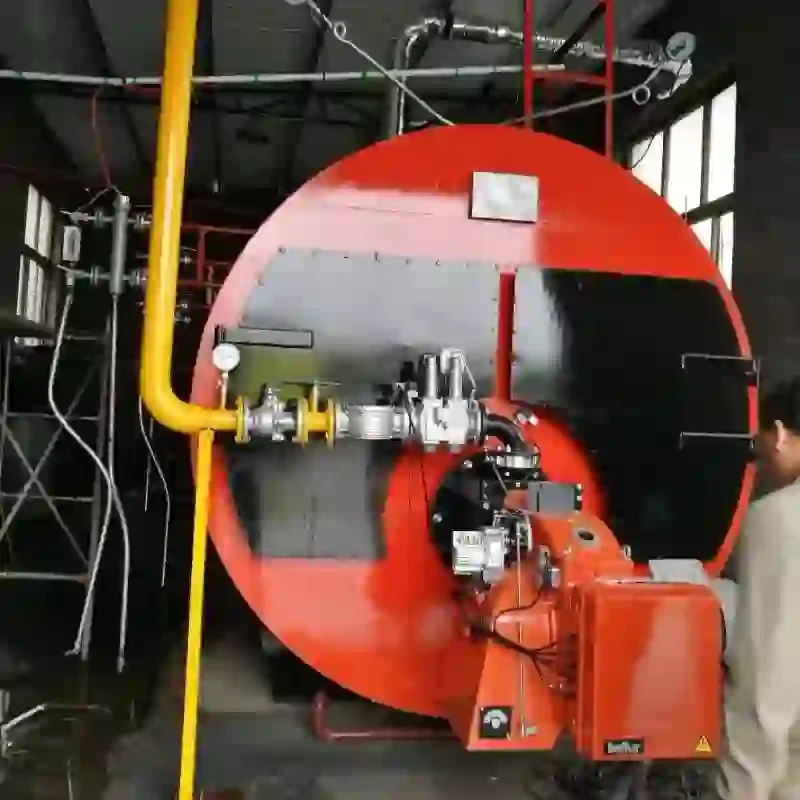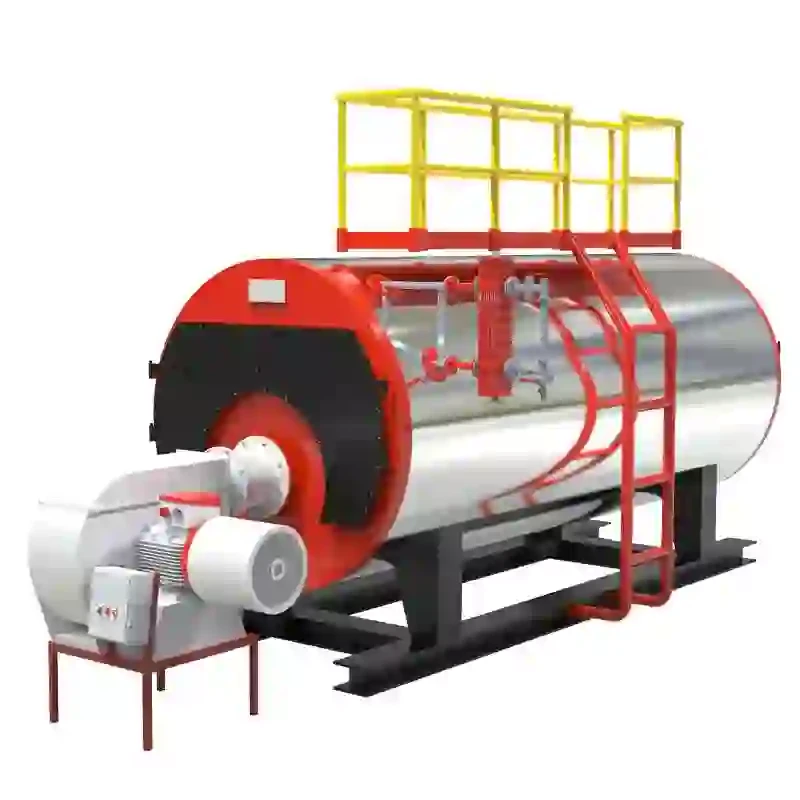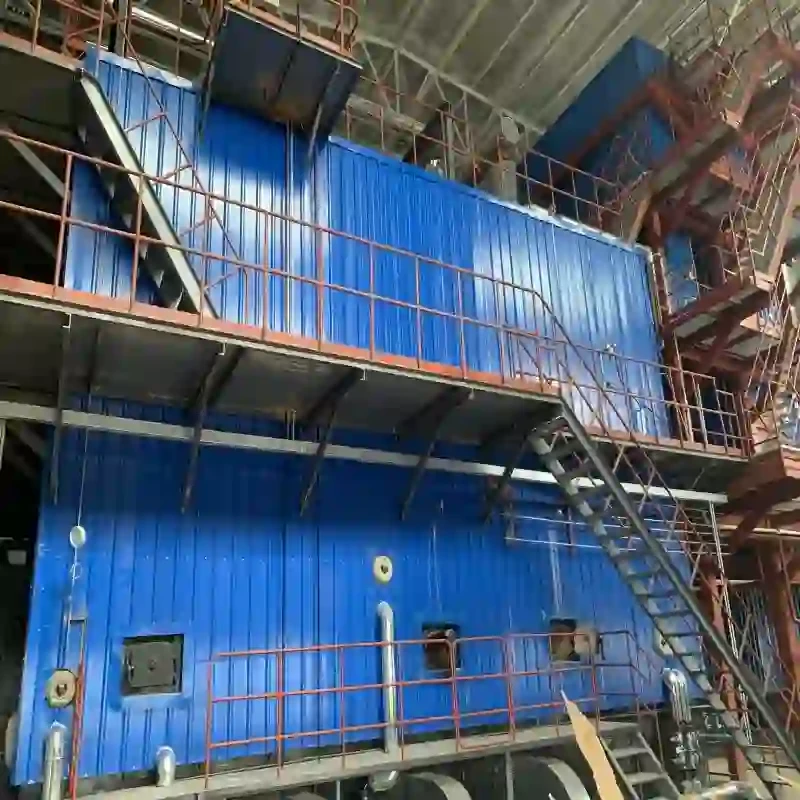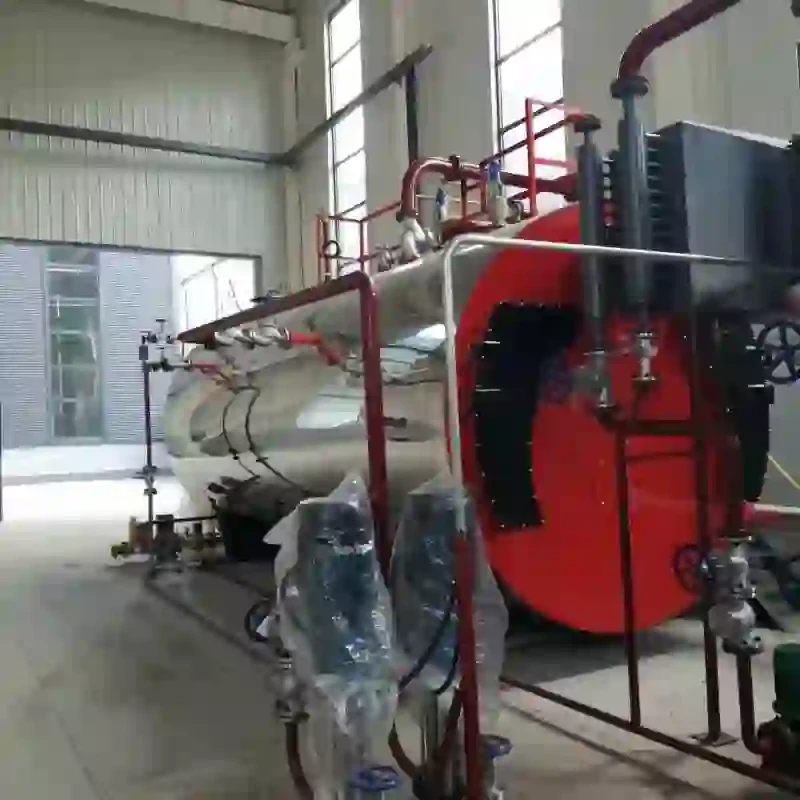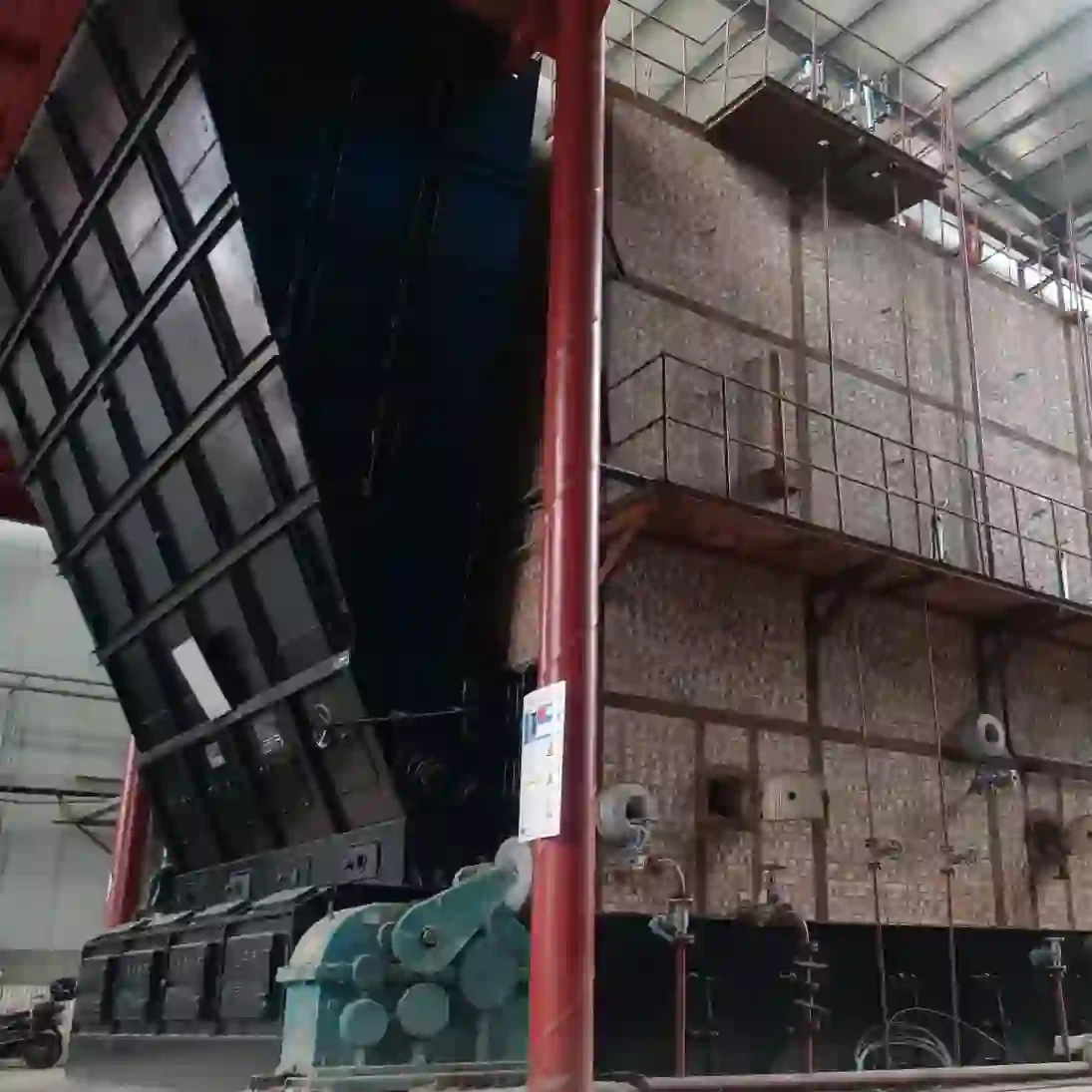
Sep . 02, 2025 03:20 Back to list
Efficient Biomass Fired Steam Boiler | Sustainable Industrial Heating
Driving Industrial Sustainability with Advanced Biomass Fired Steam Boilers
In an era defined by critical environmental mandates and fluctuating energy costs, the biomass fired steam boiler stands as a cornerstone technology for sustainable industrial operations. These sophisticated thermal systems harness renewable organic materials to produce high-pressure steam, offering a robust and environmentally conscious alternative to fossil fuel-dependent solutions. As global industries accelerate their decarbonization efforts, a deep understanding of the operational principles and multifaceted advantages of these boilers is indispensable for strategic decision-making. They are instrumental in achieving carbon reduction targets while simultaneously ensuring energy independence and operational efficiency across a diverse spectrum of industrial applications.
This comprehensive article provides B2B decision-makers and engineering professionals with an in-depth exploration of modern biomass steam generation. We will clarify how does a biomass boiler work, detail the sophisticated mechanisms behind how does an industrial biomass boiler work, and present compelling data on their technical specifications, application versatility, and significant economic and environmental benefits.
Industry Trends and the Renewable Energy Imperative
The global bioenergy market is undergoing substantial expansion, propelled by an confluence of factors: stringent governmental environmental regulations, the inherent volatility of fossil fuel markets, and an amplified corporate drive towards sustainable practices. According to recent analyses, bioenergy contributes approximately 10% to the world's primary energy supply, with industrial applications representing a significant and growing segment. Projections indicate that the market for industrial biomass boilers is poised for a Compound Annual Growth Rate (CAGR) exceeding 6% through 2030, underscoring a pronounced shift in global industrial energy strategies.
Current trends are focused on innovation in combustion technology, enhancing fuel flexibility to efficiently process a broader array of biomass feedstocks (ranging from forestry residues to agricultural byproducts), and the integration of sophisticated emissions control systems. The primary objective is to maximize thermal efficiency while rigorously managing emissions of particulate matter (PM), nitrogen oxides (NOx), and sulfur dioxide (SOx), in full compliance with international standards such as the European Industrial Emissions Directive (IED) and various US EPA guidelines. Furthermore, the pervasive adoption of automation and IoT-enabled predictive maintenance systems is optimizing operational stability and reducing long-term costs.
This evolving energy landscape mandates that industrial enterprises invest in highly efficient and reliable biomass steam generation solutions to secure a competitive edge and responsibly meet future energy demands.
Detailed Process Flow: How an Industrial Biomass Boiler Operates
Understanding the operational mechanics of how does an industrial biomass boiler work involves a series of meticulously engineered stages designed to efficiently transform solid biomass fuels into thermal energy, predominantly in the form of high-pressure steam. This process is optimized for continuous, robust operation and strict adherence to industrial safety protocols.
➤ 1. Fuel Reception and Preparation
Biomass fuel, such as wood chips, agricultural residues, or dedicated energy crops, is delivered to the plant and temporarily stored. Critical pre-processing steps include screening to remove foreign objects, crushing or shredding to achieve a consistent particle size, and often drying to reduce moisture content. Optimal moisture levels (typically 15-30%) are essential for stable combustion and maximizing caloric value, impacting the overall efficiency of the biomass fired steam boiler.
➤ 2. Automated Fuel Feeding System
Prepared biomass is precisely transported from storage silos to the boiler's combustion chamber using automated feeding mechanisms. These systems, which can include robust screw conveyors, hydraulic pushers, or pneumatic transport lines, are engineered to deliver a continuous and regulated supply of fuel. This controlled delivery is paramount for maintaining consistent heat release, stable steam output, and optimal combustion efficiency, adapting to varying load demands.
➤ 3. Combustion Chamber Design and Operation
Within the furnace, biomass undergoes a multi-stage thermal process: initial drying, subsequent pyrolysis (thermal decomposition in the absence of oxygen, producing volatile gases), gasification, and finally, complete oxidation (combustion). Modern boiler designs frequently incorporate specialized grates—such as vibrating grates, chain grates, or advanced fluidized beds—which agitate the fuel bed to ensure thorough burn-out and efficient heat liberation. Primary air is introduced beneath the grate for initial combustion, while secondary air is strategically injected higher in the furnace to complete the combustion of volatile gases, thereby minimizing unburnt carbon and gaseous pollutants.
➤ 4. Heat Transfer in Boiler Tubes
The intensely hot flue gases, often exceeding 1000°C, then pass through a precisely arranged network of water-filled tubes. This is the primary heat exchanger section. Through convection and radiation, thermal energy is efficiently transferred from the hot gases to the water circulating within these tubes. This heat transfer process elevates the water temperature, leading to vaporization and the generation of high-pressure steam. The specific design of the boiler (e.g., water-tube for higher pressures and capacities, or fire-tube for smaller applications) dictates the efficiency of this heat exchange and the steam output characteristics.
➤ 5. Steam Separation and Superheating (Critical for Power/High-Temp Processes)
The steam-water mixture generated in the tubes rises to a steam drum, where centrifugal force and internal separators effectively separate saturated steam from the remaining water. For applications demanding higher temperatures and improved turbine efficiency (e.g., power generation or specific industrial processes), this saturated steam is routed through a superheater. Here, it is further heated beyond its saturation point, producing superheated steam, which possesses greater energy content and reduces the risk of condensation in downstream equipment.
➤ 6. Flue Gas Treatment and Emissions Control
Prior to discharge into the atmosphere, flue gases are meticulously treated to remove environmental pollutants. This typically involves a multi-stage system: initially, multi-cyclone dust collectors or bag filters capture coarser particulate matter. For ultra-low emissions, electrostatic precipitators (ESPs) or more advanced ceramic filters may be employed. Further systems, such as Selective Catalytic Reduction (SCR) or Selective Non-Catalytic Reduction (SNCR), are integrated for effective reduction of nitrogen oxides (NOx), ensuring strict compliance with evolving environmental regulations.
➤ 7. Ash Handling and Valorization
Ash generated during the combustion process, comprising bottom ash from the grate and fly ash captured from flue gases, is continuously collected and conveyed to designated hoppers. Modern biomass systems prioritize ash valorization; depending on its composition, this ash can often be repurposed as a soil enhancer in agriculture or for construction materials, aligning with principles of circular economy and waste reduction.

Manufacturing Excellence and Stringent Quality Assurance
The fabrication of a high-performance industrial steam boiler necessitates unwavering adherence to rigorous engineering specifications and an exhaustive quality control regime throughout the entire production lifecycle. Our manufacturing protocols for a biomass fired steam boiler integrate state-of-the-art techniques and premium-grade materials, ensuring exceptional durability, energy efficiency, and operational safety.
Materials and High-Integrity Components:
- Pressure Parts: Fabricated from high-grade carbon steel alloys (e.g., SA-106 Gr. B, P235GH, 20G), specifically selected for their superior mechanical properties and resistance to the extreme pressures and temperatures inherent in boiler operation.
- Combustion Chamber Linings: Composed of advanced refractory materials exhibiting high thermal shock resistance, excellent insulation properties, and significant abrasion resistance, designed for sustained performance under intense combustion conditions.
- Grates: Constructed from heat-resistant cast iron or specialized alloy steels, meticulously engineered for optimal fuel agitation, complete combustion, and efficient ash discharge.
- Insulation: Utilizes high-density mineral wool or ceramic fiber blankets to effectively minimize heat loss, thereby maximizing thermal efficiency and ensuring personnel safety.
Precision Manufacturing Processes:
- Precision Cutting & Forming: Advanced CNC plasma and laser cutting technologies are employed for precise shaping of boiler plates and tubes, ensuring minimal material waste and achieving exact dimensional tolerances for seamless assembly.
- Automated Welding & NDT: Critical pressure part welding is performed using highly automated Submerged Arc Welding (SAW), Gas Metal Arc Welding (GMAW), and Shielded Metal Arc Welding (SMAW) by certified welders (e.g., ASME Section IX, EN ISO 9606-1). All primary welds undergo stringent Non-Destructive Testing (NDT) such as X-ray radiography or ultrasonic testing to guarantee structural integrity and leak-proof performance.
- Tube Bending and Expansion: State-of-the-art tube bending machines ensure precise geometries and consistent wall thickness. Hydraulic tube expanders are utilized to create secure, leak-tight connections between tubes and tube sheets.
- Refractory Application: Specialized techniques are used for the precise application of refractory linings, crucial for the thermal integrity of the furnace and overall boiler efficiency.
- Hydrostatic Testing & Final Assembly: Following meticulous component assembly, each boiler undergoes rigorous hydrostatic testing. This involves filling the boiler with water and pressurizing it significantly beyond its design operating pressure (typically 1.25 to 1.5 times) to verify absolute pressure containment integrity.
Adherence to International Testing Standards and Certifications:
Our boilers are engineered, manufactured, and tested in strict adherence to leading international codes and standards, guaranteeing optimal performance, reliability, and safety.
- ISO 9001:2015: Certified Quality Management Systems covering the entire lifecycle from design and development to production, installation, and after-sales service.
- ASME Boiler and Pressure Vessel Code (BPVC): Full compliance with Section I for Power Boilers, ensuring the highest standards of structural integrity and operational safety.
- EN 12952 / EN 12953: Conformity with comprehensive European standards governing the design, manufacture, and testing of water-tube boilers and shell boilers, respectively.
- CE Marking: Mandatory certification for products sold within the European Economic Area, affirming compliance with relevant health, safety, and environmental protection directives.
- ANSI/CSA B51: Compliance with North American Boiler, Pressure Vessel, and Pressure Piping Code for boilers deployed in Canada and the United States.
This unwavering commitment to certified quality, coupled with full material traceability and stringent in-process inspections, ensures a projected operational service life typically exceeding 20-30 years when maintained properly.
Technical Specifications and Enhanced Performance Parameters
Our advanced range of biomass fired steam boiler systems is available in diverse configurations, meticulously engineered to fulfill the specific demands of various industrial applications. The table below presents representative technical parameters that highlight their typical capabilities and performance envelopes.
Representative Biomass Fired Steam Boiler Specifications:
| Parameter | Unit | Typical Range / Value |
|---|---|---|
| Rated Steam Capacity | t/h (tonnes per hour) | 2 - 75 (Customizable up to 120 t/h) |
| Rated Steam Pressure | MPa (MegaPascals) | 1.0 - 5.3 (Equivalent to 10 - 53 bar) |
| Steam Temperature | °C (Degrees Celsius) | 184 - 450 (From Saturated to High Superheated) |
| Design Thermal Efficiency | % | ≥ 88% (up to 92% with integrated economizer & air preheater) |
| Applicable Biomass Fuels | - | Wood chips, pellets, sawdust, rice husks, bagasse, straw, forest residues, municipal solid waste derivatives (specific designs) |
| NOx Emissions (Dry, 6% O2) | mg/Nm³ | < 200 (further reduced to <50 with SCR/SNCR) |
| Particulate Matter (PM) (Dry, 6% O2) | mg/Nm³ | < 50 (achievable with advanced bag filters/ESPs) |
| Boiler Design Types | - | DZL (fire-tube), SZL (water-tube), SHL (chain grate water-tube), Circulating Fluidized Bed (CFB) |
| Control System | - | Fully integrated PLC-based automatic control with optional DCS integration |
These detailed specifications underscore the versatility and high efficiency achievable with contemporary biomass systems. Key to optimal performance are fuel characteristics; for example, biomass with a moisture content below 30% and ash content below 5% generally facilitates higher thermal efficiencies and minimizes operational complexities.
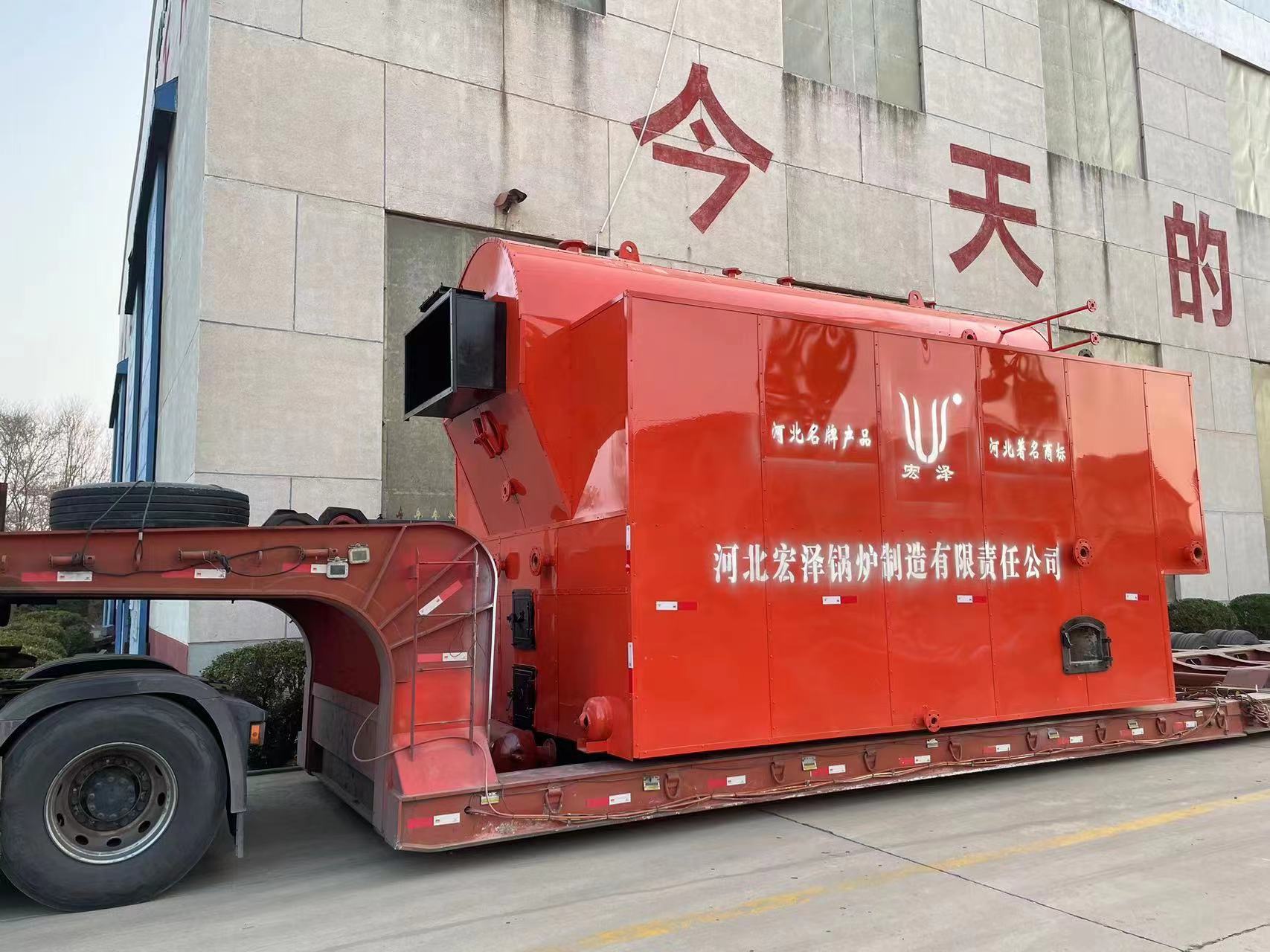
Diverse Application Scenarios Across Key Industries
The inherent adaptability, robust performance, and significant environmental benefits of a biomass fired steam boiler make it an indispensable asset across a broad spectrum of industrial applications that require reliable process heat, steam, or power generation.
- Wood Processing & Furniture Industry: A prime example of circular economy, utilizing internal wood waste (sawdust, wood chips, bark, offcuts) as a primary fuel source to generate steam for critical processes such as kiln drying lumber, hot pressing veneers and particleboards, and providing space heating for manufacturing facilities. This integration dramatically reduces waste disposal costs and achieves significant energy independence.
- Textile Industry: Provides essential high-pressure, high-temperature steam for dyeing, drying, sizing, mercerizing, and calendering operations. The consistent and clean steam supply is paramount for maintaining product quality and operational efficiency in textile manufacturing.
- Food & Beverage Processing: Generates sanitary steam for sterilization, cooking, pasteurization, concentration, and stringent Cleaning-In-Place (CIP) systems. Biomass offers a reliable, often locally sourced, and food-safe energy pathway, supporting compliance with hygiene standards.
- Chemical & Petrochemical: Supplies critical process steam for reactor heating, distillation columns, evaporation, and solvent recovery systems. The robust design and precise control capabilities ensure safe and stable operation in highly demanding and often hazardous environments.
- Pharmaceutical & Biotech: Produces sterile, validated steam for facility heating, humidification control, active pharmaceutical ingredient (API) processing, and equipment sterilization, rigorously adhering to Good Manufacturing Practice (GMP) standards.
- District Heating & Cogeneration (CHP): Large-scale biomass boiler systems are fundamental components in combined heat and power (CHP) plants, supplying heat to urban and rural district heating networks while simultaneously generating electricity for the grid, thereby bolstering regional energy security and sustainability.
- Agriculture & Biofuel Production: Utilizes agricultural residues (e.g., rice husks, bagasse from sugar cane, corn stover) to power on-site processing plants. This not only reduces reliance on external energy sources but also transforms agricultural waste into valuable energy, creating significant economic benefits for agro-industrial complexes.
- Metallurgy & Heavy Industry: Delivers essential steam for various thermal processes, pre-heating, and maintaining controlled atmospheric conditions required for metal treatment, forging, and casting operations, ensuring precise material properties.
- Water Supply & Drainage Infrastructure: While not directly consuming steam in the process, biomass boilers can be deployed to power pumping stations and treatment facilities, particularly in remote areas, enhancing energy independence and operational resilience for essential utilities.
In each of these diverse scenarios, the inherent capability of biomass boilers to convert readily available, renewable resources into reliable energy offers substantial economic and environmental benefits, significantly reducing operational expenditures and carbon emissions.
Key Technical Advantages and Robust Return on Investment (ROI)
The strategic deployment of an industrial biomass steam boiler yields a multitude of superior technical and compelling economic advantages when benchmarked against conventional fossil fuel-fired systems. These benefits collectively translate into a robust and quantifiable return on investment.
- Superior Environmental Sustainability & Carbon Neutrality: Biomass is recognized as a carbon-neutral fuel source. The carbon dioxide released during its combustion is substantially equivalent to the CO2 absorbed by the biomass during its growth cycle. This dramatically reduces net greenhouse gas emissions, significantly assisting industries in achieving stringent environmental compliance and enhancing their corporate social responsibility (CSR) standing.
- Enhanced Fuel Cost Stability & Significant Reductions: Biomass fuels, typically sourced locally, exhibit markedly lower price volatility compared to globally traded fossil fuels. This provides industrial operators with predictable, long-term energy costs and a critical buffer against geopolitical or market-driven energy price fluctuations. Additionally, numerous governmental incentives and subsidies exist for renewable energy adoption, further improving the economic viability.
- Unmatched Fuel Flexibility: Modern biomass boilers are meticulously engineered to efficiently combust a broad spectrum of organic fuels. This includes diverse wood wastes, various agricultural residues, and purpose-grown energy crops. This inherent flexibility guarantees security of fuel supply and empowers facilities to adapt to variations in local fuel availability and cost-effectiveness.
- Peak Thermal Efficiency: Integrating advanced combustion technologies, such as optimized grate designs and multi-zone primary/secondary air injection, along with sophisticated heat recovery systems (economizers and air preheaters), these boilers consistently achieve thermal efficiencies surpassing 88%, often reaching up to 92%. This directly translates into reduced fuel consumption per unit of steam produced and substantial operational cost savings.
- Exceptional Corrosion Resistance and Extended Longevity: Constructed using high-grade, corrosion-resistant materials and incorporating state-of-the-art welding techniques, these boilers are designed for a formidable service life of 20-30 years. Complementary robust water treatment systems are integrated to effectively mitigate internal corrosion and scaling, thus ensuring long-term operational integrity and minimizing maintenance interventions.
- Advanced Automation & Intrinsic Safety: Equipped with sophisticated PLC-based control systems, our boilers offer fully automatic operation, encompassing fuel feeding, optimized combustion control, ash removal, and continuous emissions monitoring. Comprehensive safety interlocks and multi-redundant alarm systems are integrated to prevent critical operational hazards such as overpressure, low water conditions, and flame failure, thereby ensuring unparalleled operational safety and reliability.
- Effective Waste-to-Energy Solutions: For industries that generate substantial organic waste streams, a biomass boiler provides an elegant solution by converting this waste into a valuable energy resource. This simultaneously addresses costly waste disposal challenges and significantly reduces external energy procurement, embodying a true waste-to-value paradigm.
These synergistic advantages collectively underscore a clear, strategic imperative for businesses to invest in high-quality biomass-fired steam solutions, positioning them for long-term economic resilience and environmental leadership.
Vendor Comparison: Differentiating Factors in Biomass Boiler Solutions
The selection of an appropriate supplier for a biomass fired steam boiler is a pivotal decision that can profoundly impact the long-term success and operational efficiency of any industrial project. While the market offers numerous biomass boiler solutions, critical differentiators often reside in core technological capabilities, accumulated engineering experience, and the robustness of after-sales support.
Critical Factors for Informed Vendor Selection:
| Feature/Criterion | Standard Vendor Offering | Premium Vendor Offering (e.g., Leading Manufacturers) |
|---|---|---|
| Core Combustion Technology | Basic fixed or simple vibratory grate systems | Sophisticated multi-zone reciprocating/fluidized bed grates, optimized air distribution for staged combustion, enabling ultra-low NOx emissions and high fuel flexibility. |
| Biomass Fuel Flexibility | Limited to specific, pre-processed biomass types (e.g., dry wood pellets only) | Exceptional versatility across a wide range of biomass, including high moisture content fuels; intelligent control systems for automatic adaptation to varying fuel properties. |
| Attainable Thermal Efficiency | Typical range of 80-85% | Consistently achieves 88-92% with fully integrated economizer, air preheater, and advanced heat recovery. |
| Advanced Emissions Control | Basic cyclone dust collectors | Multi-stage particulate removal (cyclone + bag filter/ESP), integrated SNCR/SCR for NOx reduction, consistently meeting and exceeding stringent international emission limits. |
| Automation & Control Systems | Rudimentary PLC controls with significant manual intervention required | Advanced PLC/DCS integration, real-time remote monitoring, predictive maintenance capabilities, variable speed drives (VSD) for optimized fan and pump operation. |
| Customization & Engineering Capabilities | Limited to off-the-shelf standard boiler models, minimal modifications possible | Full bespoke design capabilities tailored for specific fuel characteristics, challenging site constraints, precise steam parameters, and seamless integration with complex existing plant infrastructure. |
| Comprehensive After-Sales Support | Standard limited warranty, restricted spare parts availability | Extended comprehensive warranty, 24/7 global technical support, extensive genuine spare parts inventory, proactive preventative maintenance contracts, and certified operator training programs. |
Leading manufacturers distinguish themselves through a continuous commitment to research and development, robust engineering principles, and a demonstrable track record of successful, high-performance installations globally. Their offerings typically encompass superior material specifications, cutting-edge control systems, and comprehensive post-installation support, all contributing to a measurably lower total cost of ownership (TCO) over the entire operational lifespan of the boiler.
Bespoke Solutions for Unique Industrial Requirements
Acknowledging that each industrial facility presents a unique set of operational parameters, site-specific challenges, and energy demands, we specialize in providing highly customized biomass fired steam boiler solutions. This tailored engineering approach guarantees not only optimized performance but also seamless and efficient integration within the client's existing plant infrastructure.
Our comprehensive customization capabilities encompass:
- Fuel-Specific Combustion System Design: Precision engineering of combustion systems (including grate type, furnace volume, and multi-zone air distribution) to efficiently and cleanly burn specific biomass types and moisture contents, ranging from high-moisture agricultural waste to low-ash wood pellets.
- Tailored Steam Parameter Generation: Designing the boiler system for exact steam capacity requirements (from compact 2 t/h units to large-scale 120 t/h plants), precise operating pressure, and desired temperature (either saturated or superheated steam) to perfectly align with specific process demands.
- Optimized for Space & Site Constraints: Developing innovative, compact boiler designs or modular systems that can be effectively integrated into challenging or restricted existing facility footprints, thereby minimizing extensive civil works and accelerating installation timelines.
- Seamless Integration with Legacy Systems: Ensuring complete compatibility and efficient interfacing with existing plant infrastructure, including steam distribution networks, water treatment facilities, automated fuel handling systems, and electrical power grids.
- Advanced Emission Control Systems: Implementing bespoke flue gas treatment solutions engineered to meet and surpass the most stringent local and national environmental regulations, incorporating specialized technologies for NOx, SOx, and particulate matter (PM) reduction.
- Sophisticated Automation & SCADA Integration: Developing highly advanced control logic for fully automated boiler operation and seamless integration into plant-wide Supervisory Control and Data Acquisition (SCADA) systems, providing centralized monitoring and control.
Our dedicated engineering team engages in close collaboration with clients from the initial conceptualization phase through to successful commissioning. This process includes conducting detailed feasibility studies, advanced Computational Fluid Dynamics (CFD) modeling for combustion optimization, and comprehensive 3D plant design, ensuring the delivery of solutions that are not only highly efficient but also future-proof and resilient.
Real-World Application Case Studies and Proven Customer Experience
Our unwavering commitment to delivering high-performance, exceptionally reliable biomass boiler systems is powerfully demonstrated by a portfolio of successful installations across a diverse range of industries globally. The following case studies highlight the tangible practical benefits and superior operational efficiency consistently achieved by our valued clients.
Case Study 1: Transforming Waste into Energy for a Wood Processing Giant
Client: A prominent lumber and panel board manufacturing conglomerate situated in Southeast Asia.
Challenge: The client was heavily dependent on a costly combination of grid electricity and aging diesel-fired boilers, while simultaneously facing significant expenses for disposing of vast quantities of wood waste (sawdust, bark, wood chips). The strategic imperative was to implement a sustainable, economically viable solution for process steam generation and on-site electricity production.
Solution: We engineered and installed a robust 25 t/h, 3.82 MPa operating pressure, 400°C superheated biomass fired steam boiler system. This was integrated with a back-pressure steam turbine to enable efficient Combined Heat and Power (CHP) generation. The boiler was meticulously optimized to burn a challenging mixed wood waste feedstock, effectively handling fuel with up to 50% moisture content.
Results: The plant achieved a remarkable over 90% energy self-sufficiency, leading to an annual reduction in energy expenditures of approximately $2.5 million. The substantial wood waste disposal costs were virtually eliminated, resulting in an accelerated estimated ROI payback period of just 3.5 years. Furthermore, consistent compliance with stringent emission standards was maintained, significantly enhancing the client's environmental stewardship.
Case Study 2: Dairy Producer's Journey to Greener Steam Generation
Client: A leading dairy product manufacturer located in Central Europe.
Challenge: The facility operated an outdated heavy fuel oil boiler which incurred prohibitively high operational costs and produced excessive carbon emissions, directly conflicting with the company's aggressive corporate sustainability targets. A reliable and consistently high-quality steam supply was absolutely critical for their pasteurization, sterilization, and CIP processes.
Solution: We implemented a 15 t/h biomass fired steam boiler system, specifically designed for highly efficient combustion of wood pellets. This system incorporated advanced automation features and a sophisticated multi-stage flue gas treatment system, ensuring ultra-low emissions. The compact boiler design was strategically chosen to minimize site disruption and expedite installation within the existing plant footprint.
Results: The client successfully achieved an impressive reduction of over 80% in CO2 emissions and realized a significant 30% decrease in annual fuel costs. Operational stability and reliability were substantially improved, with minimized downtime attributed to the boiler's robust design and our comprehensive ongoing maintenance support. This project was a cornerstone in their ambitious journey towards achieving full carbon neutrality.

Trustworthiness: FAQ, Lead Time, Warranty & Dedicated Support
Frequently Asked Questions (FAQ)
Q: What specific types of biomass fuels are compatible with your boilers?
A: Our biomass boilers are engineered for exceptional versatility. They can be precisely configured to efficiently combust a broad spectrum of biomass fuels, including various wood chips, sawdust, wood pellets, diverse agricultural residues (such as rice husks, bagasse, straw, corn cobs), and dedicated energy crops. Fuel flexibility is a fundamental design principle enabling adaptation to regional availability.
Q: What are the typical emission performance levels of your biomass boilers?
A: Our boilers are meticulously designed to consistently meet, and often surpass, stringent international and local emission standards. Through optimized multi-stage combustion and the integration of advanced flue gas treatment technologies (e.g., multi-cyclone separators, sophisticated bag filters, electrostatic precipitators (ESPs), and Selective Catalytic/Non-Catalytic Reduction (SCR/SNCR)), we typically achieve NOx levels below 200 mg/Nm³ and particulate matter levels below 50 mg/Nm³ (both at 6% O2 dry basis), depending on the specific fuel and regulatory requirements.
Q: What is the anticipated service life of an industrial biomass fired steam boiler?
A: With diligent adherence to recommended operational protocols and a consistent preventative maintenance schedule, our boilers are robustly constructed for an extended service life, typically ranging from 20 to 30 years. This longevity is a direct result of our use of high-quality materials, strict compliance with international manufacturing codes, and meticulous production processes.
Q: Do you provide installation and commissioning services for your boiler systems?
A: Absolutely. We offer comprehensive on-site services, which include expert supervision during the installation phase, meticulous commissioning, and rigorous performance testing. Our highly experienced engineers work collaboratively with your local site teams to ensure the boiler achieves optimal operational performance and efficiency from the very first day of service.
Lead Time and Fulfillment Process
The typical lead time for a new biomass boiler system varies primarily based on its complexity, the degree of customization required, and the overall steam generation capacity. Generally, lead times range from 16 to 24 weeks from the definitive order confirmation to the ex-works shipment date. This comprehensive timeframe encompasses detailed engineering design, meticulous material procurement, the entire manufacturing cycle, and rigorous internal quality assurance inspections. Project-specific timelines are precisely provided during the formal proposal phase, taking into account all client-specific requirements and complex logistical considerations.
Robust Warranty Commitments
We maintain unwavering confidence in the exceptional quality and inherent reliability of our products, supporting them with a comprehensive warranty package. Our standard warranty typically covers manufacturing defects for a period of 12-24 months from the date of final commissioning or 18-30 months from the shipment date, whichever occurs first. The precise duration is contingent upon the specific boiler model, its components, and the agreed-upon contractual terms. We also offer extended warranty options and tailored service contracts to provide enhanced, long-term operational peace of mind.
Dedicated Customer Support and After-Sales Service
Our commitment to your operational success extends far beyond the point of delivery and commissioning. We provide a full spectrum of world-class after-sales support services, meticulously designed to ensure the continuous, highly efficient operation of your biomass boiler throughout its entire lifespan. This includes:
- 24/7 Global Technical Assistance: Round-the-clock remote support and expert troubleshooting provided by our highly experienced and certified engineers, minimizing potential downtime.
- Strategic Spare Parts Management: Assured ready availability of genuine, high-quality spare parts to ensure rapid repairs and reduce operational interruptions to an absolute minimum.
- Proactive Preventative Maintenance Programs: Structured, scheduled inspections, and comprehensive servicing routines designed to maximize boiler lifespan, maintain peak efficiency, and prevent unforeseen breakdowns.
- Comprehensive Operator Training: Tailored, in-depth training programs for your on-site operational staff, covering all aspects of boiler systems, advanced control interfaces, and essential safety protocols.
- Continuous Performance Optimization Consulting: Ongoing expert consulting services aimed at continuously improving fuel efficiency, further reducing emissions, and adapting to evolving operational requirements.
Our dedicated, global service team ensures that your strategic investment in a biomass boiler consistently delivers exceptional value and robust performance throughout its extensive operational life.
Conclusion: Paving the Way for a Sustainable Industrial Energy Future
The industrial sector's profound transition towards sustainable energy paradigms is unequivocally no longer an aspirational goal but a critical, strategic imperative. Within this transformative landscape, the biomass fired steam boiler emerges as a highly efficient, demonstrably reliable, and environmentally responsible technological solution, positioned at the vanguard of this essential shift. By offering substantial reductions in carbon emissions, ensuring unparalleled stability in energy costs, and possessing the unique capability to convert industrial organic waste streams into invaluable heat and power, these advanced systems provide an exceptionally robust solution for industries resolutely committed to both achieving operational excellence and upholding exemplary ecological stewardship. A strategic investment in a biomass boiler is, fundamentally, an investment in a cleaner, more resilient, and truly energy-independent industrial future.
References
- International Energy Agency (IEA). "Bioenergy." Available at: www.iea.org/fuels-and-technologies/bioenergy (Accessed October 26, 2023).
- ASME Boiler and Pressure Vessel Code (BPVC) - Section I: Rules for Construction of Power Boilers.
- European Committee for Standardization (CEN). EN 12952: Water-tube boilers and auxiliary installations; EN 12953: Shell boilers.
- ISO 9001:2015. Quality management systems – Requirements.
-
Comprehensive Guide to Steam Boiler Installation Diagram – Global Best Practices and Future Trends
NewsNov.24,2025
-
A Practical Guide to the Selection of Steam Boiler for Industrial Efficiency
NewsNov.23,2025
-
Comprehensive Guide to Steam Boiler PDF Manuals and Their Global Impact
NewsNov.22,2025
-
Discover How Steam Boiler Videos Improve Industrial Training & Safety
NewsNov.22,2025
-
Comprehensive Guide to Wood Fired Steam Boiler Design – Efficiency, Applications, and Innovations
NewsNov.21,2025
-
Comprehensive Guide to Steam Boiler Working – Efficiency & Applications
NewsNov.20,2025
Related PRODUCTS






